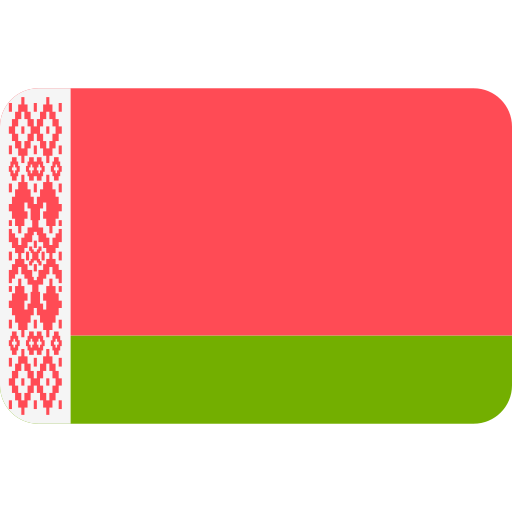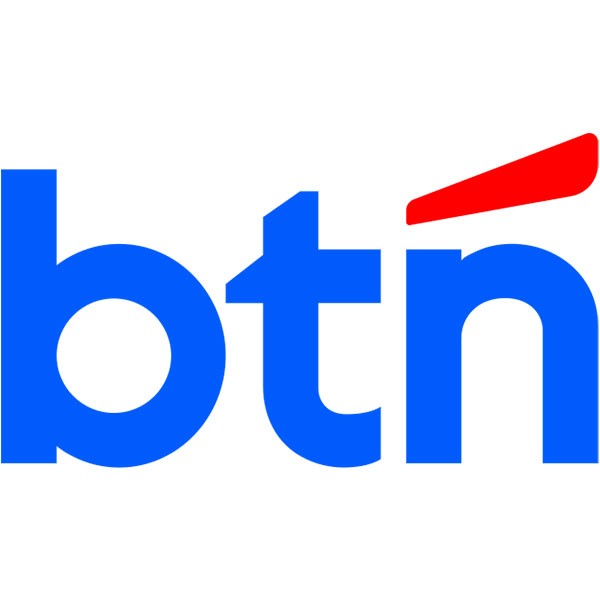Bank of Belarus: A comprehensive introduction to
Belarusbank is the largest commercial bank in Belarus, with its extensive service network, solid financial position and innovative digital services, which dominate the domestic financial market. Founded in 1995 and headquartered in Minsk, a state-controlled bank offers a wide range of financial solutions to individual and corporate clients thanks to government support and a strong market position. The following is a comprehensive introduction to Bank of Belarus, covering its basic information, range of services, regulatory compliance, financial health, products and fees, digital experience, customer service, security measures, unique services and market position, providing customers and stakeholders with a detailed reference.
Bank of Belarus is a state-controlled commercial bank listed on the Belarusian Stock Exchange. Belarusbank, the full name of Belarusbank, was formed by the merger of Belarusian Savings Bank and Bank of Belarus by presidential decree in 1995, and is headquartered in Minsk, Belarus, with a specific address at 18 Dzerzhinskogo Avenue. The Belarusian government holds 99% of the shares, reflecting its strong state ownership. As one of the oldest banks in Belarus, the bank plays a central role in the country's financial system.
The bank's service network covers the whole of Belarus and has more than 600 branches, including 151 branches in Minsk alone. In addition, it has representative offices in Russia (Moscow) and Poland (Warsaw), showing a certain international influence. ATMs are widely distributed in the vicinity of branches, especially in urban and rural areas, providing convenient cash deposit and withdrawal services for traditional banking customers. Bank of Belarus, through its digital platform "M-Belarusbank" and internet banking services, provides online account management, transfers, bill payments and other functions, enabling customers to bank anytime, anywhere.
Belarusian banks are regulated by the National Bank of Belarus (NBRB), which ensures compliance with national banking regulations. As a member of the Deposit Money Bank, it participates in the Belarusian Deposit Insurance Program, which provides deposit insurance of up to 18,000 Belarusian rubles (about $5,000) per depositor, guaranteeing the safety of customer funds. No recent reports of significant regulatory or compliance issues indicate a good performance in terms of compliance. Banks also follow international standards, such as FATCA and the Wolfsberg Principles, to protect against money laundering and financial crime.
In terms of financial health, the Bank of Belarus showed a solid performance. According to 2021 data, its capital adequacy ratio (CAR) is 15.42%, which is higher than the minimum requirement of the NBRB (12%), showing a strong capital buffer capacity. The specific data on the non-performing loan ratio (NPLR) and liquidity coverage ratio (LCR) are not disclosed, but the asset quality is good and the liquidity management meets regulatory standards. As of 2024, total assets reach approximately $7.12 billion, showing continued growth and a strong market position.
Belarusian banks offer a wide range of deposit and loan products to meet the needs of individual and business customers. Deposit products include current accounts, savings accounts and time deposits. The interest rate of fixed deposits, such as "profit plus" deposits, is linked to the benchmark interest rate of the National Bank, which is 13.50% in 2024 and 12.50% (with a maturity of 1-12 months). Featured products include high-yield savings accounts and deposit cards that allow customers to deposit directly to their accounts, reducing queue times. All deposits are protected by a deposit insurance scheme of up to 18,000 Belarusian rubles. Loan products include personal loans, home loans, and car loans. Personal loans start at 12% per annum and can be borrowed up to 10,000 Belarusian rubles for a period of up to 5 years. Mortgages offer fixed or variable interest rates of around 10-12% per annum for up to 30 years. The interest rate of the car loan is about 10-15% per annum, and the term is up to 5 years. Banks support flexible repayment options such as monthly or quarterly instalments.
Fee structures vary depending on account type and market. Account management fees may include monthly or annual fees, and some accounts may have a minimum balance requirement (e.g. 500 Belarusian rubles), below which fees may be charged. Domestic transfers are usually free of charge, and international transfers may incur a 2-3% foreign exchange fee. Overdraft fees and ATM interbank withdrawal fees vary by market and should be checked with your local branch. Bank of Belarus emphasizes transparency and has no hidden fees, and customers can obtain a detailed fee schedule through the official website or by contacting customer service at +375 17 218-84-31.
Digital services are a core competency of Belarusian Bank, and its "M-Belarusbank" app has received a high rating of 4.5 stars on the App Store and 4.2 stars on Google Play. The app supports online account opening, instant transfers, bill payments, card management, and secure logins (facial recognition, fingerprint, or pattern). Banks foster financial innovation through open banking APIs and support modern payment methods such as Apple Pay and Google Wallet.
In terms of customer service, Bank of Belarus offers 24/7 support via phone (+375 17 218-84-31), email, and live chat. Social media (e.g. X:@belarusbank) is responsive. Complaints are handled efficiently, with an average resolution time of about 2 working days. Customer satisfaction is high, and banks reward customers through loyalty programs. Due to its international operation, the bank provides support in Belarusian, Russian and English to meet the needs of cross-border customers.
In terms of security measures, deposits are protected by the Belarusian Deposit Insurance Program up to 18,000 Belarusian rubles. Banks use fraud prevention technologies such as real-time transaction monitoring and two-factor authentication to ensure the safety of funds. It adheres to international banking security standards and has not reported major data breaches, demonstrating a commitment to customer data protection.
Belarusian banks stand out with their special services for specific customer groups. Student accounts are free of fees, and education loans are available. Senior-only banking includes retirement savings accounts and pension management services. Green loans support renewable energy projects and green bonds, in line with ESG principles.
Among the Belarusian banking sector, Bank of Belarus is the largest bank, with total assets of $7.12 billion in 2024, accounting for a significant market share. It has won several national awards such as "Best Bank in Belarus" and has been recognized for its green finance and ESG initiatives. Belarusian banks maintain their leading position in the industry thanks to their robust corporate structure and commitment to sustainable development.
Bank of Belarus is a financial institution that combines traditional banking services with modern digital innovations. Its M-Belarusbank application, extensive branch network, and diverse product portfolio make it ideal for both individual and corporate customers. With a solid financial position, a commitment to sustainability, and excellent customer service, Bank of Belarus continues to play an important role in the banking sector in Belarus and the region.
History
from 1922 to 1987, Belarus was included in the Soviet State Labor Savings Bank system. In 1987, the Bank of the Republic of Belarus, a savings bank of the USSR, was established, and in 1991 it was restructured into the Belarusian Savings Bank. In 1995, the Presidential Decree of the Republic of Belarus established the Bank of Belarus, a joint-stock savings bank, in which the State holds 99 per cent of the shares, following the nationalization and forced merger of the State-owned Belarusian Savings Bank and the commercial bank of Belarus.
In 1996, the Bank of Belarus acquired the Belsviazbank and Belzheldorbank sector banks, which further contributed to the nationalization of the Belarusian banking sector. A customer-banking system was introduced. In the same year, the bank became a major member of Europay International. A year later, representative offices were opened in Warsaw, Poland, and Moscow, Russia.
In 2000, the bank became a major member of VISA International.
In 2003, the Bank of Belarus opened a representative office in Frankfurt, Germany. In 2005, MinskComplexBank was merged into the Bank of Belarus.
In 2007, Bank of Belarus became the first Belarusian bank to open a representative office in Beijing. A year later, the People's Bank of China's currency foreign exchange trading was implemented.
In 2010, the first tripartite framework agreement in the history of the banking system was signed with the Bank of France and the Bank of Belgium. Partnerships have been established with banks from more than 145 countries, with Germany, Switzerland, China, Poland and Turkey leading the way. Last year, the largest syndicated loan in the history of the Belarusian banking system was attracted to $<><> billion.
In 2012, Bank of Belarus became a full member of the World Association of Savings Banks (WSBI), one of the largest banking associations in the world, which promotes the interests of savings banks and retail banking institutions. In the same year, Bank of Belarus became a partner bank of the SCO interbank complex.
ON JANUARY 16, 2013, THE PARTIES SIGNED AN AGREEMENT TO ESTABLISH BELCARD. The Bank Processing Center, JSC, Bank of Belarus, Belagroprombank, JSC and Belinvestbank, JSC are its founders.
In 2015, Belarusian banks attracted 20.3 billion euros in syndicated loans, a record high in the history of Belarusian banking.
In 2016, the KGB announced that the senior vice-president of the Bank of Belarus, Khnaz Haspadarik, was detained for bribery and criminal proceedings were initiated against him.
In 2016, the Bank of Belarus closed its representative office in Poland, and in 2018 it closed its representative office in Moscow.
In October 2022, the international hacker group "Anonymous" hacked into the website of the Bank of Belarus.















